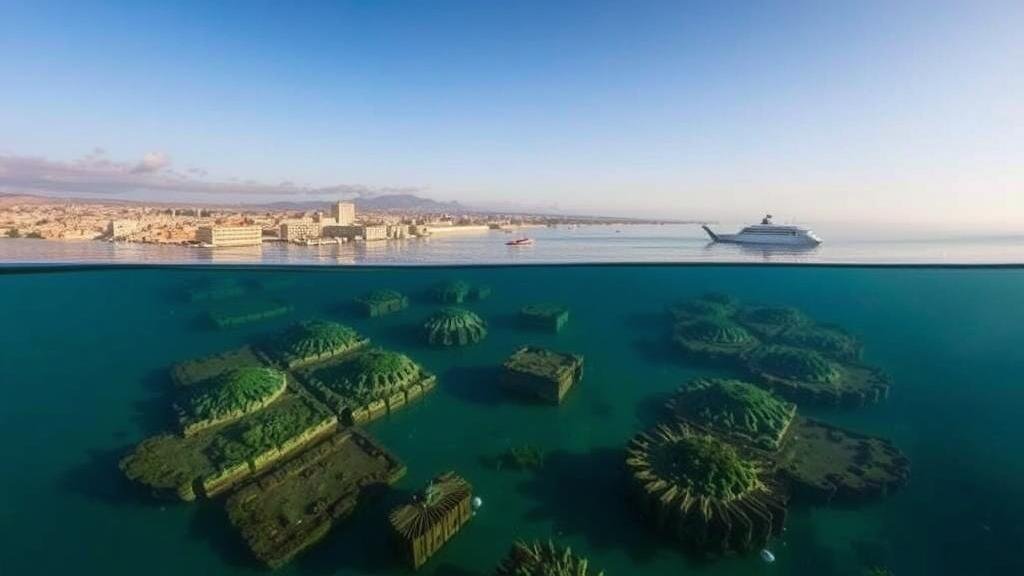Investigating the origins of sunken cities off Tunisia’s coastline, linked to Carthage.
Investigating the Origins of Sunken Cities off Tunisia’s Coastline, Linked to Carthage
Tunisia, a North African nation with a rich tapestry of history, is renowned for its sun-kissed beaches, ancient ruins, and significant archaeological discoveries. Among these treasures are the sunken cities off its coastline, remnants of the once-thriving Phoenician civilization, of which Carthage was a pivotal center. This article explores the origins, archaeological significance, and historical context of these submerged sites, focusing on their connection to Carthage.
The Historical Context of Carthage
Carthage was established in the 9th century BCE by Phoenician settlers from modern-day Lebanon. Located strategically along the Mediterranean Sea, it became a dominant trading hub that controlled various maritime routes. Carthage’s influence extended across North Africa, parts of Spain, and even into the islands of Sicily and Malta.
The city thrived until its destruction in 146 BCE during the Third Punic War, resulting in the rise of the Roman Empire. But, the question remains: what happened to the areas surrounding Carthage, particularly the cities that now lie beneath the waves?
The Discovery of Sunken Cities
Over the past few decades, marine archaeological surveys have identified a number of submerged sites off the coast of Tunisia. Notable among these discoveries are:
- Hannibals Port: Located near modern-day Tunis, this site is believed to be a critical component of Carthages naval prowess.
- Carthages Harbor: Evidence of ancient docks and shipwrecks has been unearthed, indicating the city’s significant maritime activity.
- Other Coastal Settlements: Sites such as the submerged ruins near the island of Djerba also hold potential connections to Carthaginian commerce.
The Causes of Submergence
The reasons for the submergence of these cities are multifaceted. While seismic activity and rising sea levels are contributing factors, human actions, such as construction and land reclamation, have also played a role. A study conducted by the University of Tunis in 2021 indicated that coastal erosion has been exacerbated by climate change, leading to increased flooding and the eventual sinking of coastal areas.
Archaeological Significance
The archaeological value of these sunken cities is immense, as they provide crucial insights into the maritime trade, architecture, and daily lives of the Carthaginians. For example, underwater excavations have revealed:
- Trade Artifacts: Items such as amphorae, which were used to transport oil and wine, showcase the trade networks that Carthage sustained.
- Structures: Foundations of buildings and remnants of docks illustrate sophisticated engineering techniques employed by the Carthaginians.
- Shipwrecks: The remains of ancient vessels offer a glimpse into naval technology and warfare strategies.
Real-World Applications and Future Research
Understanding these submerged sites can have practical applications in disaster prevention and environmental management. By studying ancient maritime practices, modern scientists can gain insight into sustainable coastal development and climate resilience. For example, techniques used by the Carthaginians to manage their resources may inform current methods for sustainable development and marine conservation.
Future research opportunities abound as technology such as underwater drones and remote sensing become more accessible. Continued exploration of these sites can further elucidate the economic and cultural dynamics of one of history’s greatest civilizations.
Conclusion
The sunken cities off Tunisia’s coastline serve as a potent reminder of the grand legacy of Carthage, a civilization that once commanded vast territories and influenced trade throughout the Mediterranean. Each discovery beneath the waves contributes to our understanding of historical developments and the intricate balance between humanity and nature. As we continue to uncover the mysteries of these underwater sites, we not only pay homage to a bygone era but also learn valuable lessons for the future.



